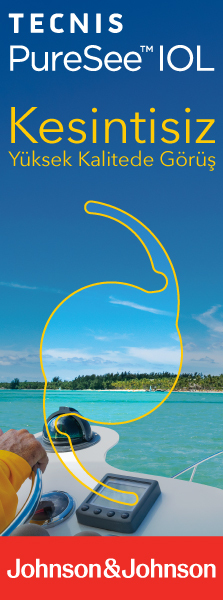TJ-CEO
2011 , Vol 6 , Num 3
Scleral Fixated Posterior Chamber Intraocular Lens Implantation Results
1Karadeniz Teknik Üniversitesi Tıp Fakültesi, Göz Hastalıkları A.D., Trabzon, Yrd. Doç. Dr.2Karadeniz Teknik Üniversitesi Tıp Fakültesi, Göz Hastalıkları A.D., Trabzon, Asist. Dr.
3Karadeniz Teknik Üniversitesi Tıp Fakültesi, Göz Hastalıkları A.D., Trabzon, Prof. Dr. Purpose: To report the outcomes of scleral fixated posterior chamber intraocular lens (SFIOL) implantation in eyes with inadequate capsular support as a result of various factors.
Materials and Methods: Data belonging to 50 eyes of 50 patients who had been operated with SFIOL implantation technique between January 2001-March 2011 were retrospectively evaluated. Obtained parameters were age, gender and clinical distribution of patients, type of implantation, nature of SFIOL, preoperative and postoperative ocular findings, complications, and follow-up period.
Results: The mean age was 59.76±18.76 years in all study group including 23 (46%) female and 27 (54%) male patients. The mean follow up-period was 6.3±10.35 months. Type of implantation was primary in 17 (34%) eyes and secondary in 33 (66%) eyes. Nature of implanted SFIOLs was rigid in 47 (94%) eyes and foldable in 3 (6%) eyes. The main postoperative complications were intravitreal hemorrhage (6%), corneal edema (30%), iridocyclitis (10%), pupillary distortion (14%), SFIOL decentralization (4%) endoftalmitis (2%), retinal detachment (4%), intraocular pressure elevation (22%), hypotonia (2%), and choroidal detachment (2%).
Conclusion: In the eyes with inadequate posterior capsular support, SFIOL implantation is useful option for aphakic rehabilitation. But the unexpected complications of the method should be considered with respect to preoperative ocular findings. Keywords : Aphakia, cataract extraction, complications, intraocular lenses





